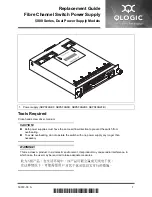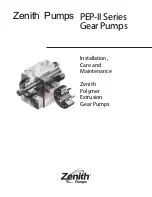
CJS 20V/80 PLUS
English |
9
www.ffgroup-tools.com
mounted in the blade holder
(13)
.
6.
To remove the saw blade
(10)
, follow the in-
structions above in reverse order.
INSTALLING THE PARALLEL STOP (Image C)
The parallel stop
(11)
enables you to saw parallel
cuts.
1. Undo the two locking screws
(12)
on the sol-
eplate
(8)
.
2.
Now slide the parallel stop
(11)
into the guides
(e)
&
(f)
on the soleplate
(8)
. You can fit the
parallel stop
(11)
on either the left or right of
the equipment.
3. The guide strip must always face downwards.
Set the required distance using the measure-
ment scale on the parallel stop
(11)
and tight-
en the locking screws
(12)
again.
IMPORTANT:
The read-off point for the measure
-
ment scale is at point
(e)
or
(f)
, as shown in Image
C, depending on which side the parallel stop is
inserted from.
SETTING THE SOLEPLATE FOR MITER CUTS
BEVEL ADJUSTMENT (Image E)
The soleplate can be tilted from 0° to 45° to per-
form bevel cuts.
1. First remove the adapter for dust extraction
system
(5)
by slightly lifting the back end while
pulling as shown in Image A.
2. With the 3mm hex. key
(4)
loosen the locking
bolt
(7)
which releases clamp plate
(18)
.
3. Tilt the soleplate to the desired angle.
4.
Tighten locking bolt
(7)
to secure.
NOTE:
As the bevel increases, the blade length
(10)
will effectively shorten. Ensure the blade
(10)
will make the cut completely through the
material prior to beginning.
IMPORTANT:
For miter cuts you must remove
the locking screws for the parallel stop
(12)
and
the splinter guard
(16)
.
ADAPTER FOR DUST EXTRACTION SYS-
TEM
WARNING: DUST CREATED WHEN WORKING
MAY BE DANGEROUS.
Connect your jigsaw to a vacuum cleaner using
the adaptor for dust extraction
(5)
. This will en
-
sure optimum dust extraction from the work-
piece. The benefits are that you will protect both
the equipment and your own health. Your work
area will also be cleaner and safer.
1. Fit the adapter
(5)
as shown in Image A. The
adapter
(5)
must audibly engage to ensure
that it is secure in the soleplate
(8)
. The adapt
-
er for chip extraction
(5)
cannot be used for
miter cuts.
2. Fit the vacuum tube of the vacuum cleaner
onto the adaptor opening
(5)
. Check that the
connections are air-tight.
LINE GUIDE
Using the line mark
(17)
you can carry out exact
cuts following cutting lines marked on the work-
piece.
IMPORTANT:
Carry out a trial cuts in a piece of
waste wood.
The mark
(17)
in the center of the soleplate is
only provided for cutting along a line and not for
reading the measurement scale.
SPLINTER GUARD (Image 3)
The splinter guard
(16)
ensures that the material
you want to cut does not splinter or crack during
sawing. Insert it into the soleplate
(8)
from under-
neath as shown in Image D.
NOTE:
The splinter guard can be used only for 0°
cuts and must be removed for miter cuts up to
47°!
OPERATION
ON/OFF SWITCH
To switch on:
Press the locking button
(1)
and the On/Off
switch
(2)
.
Infinitely variable stroke speed control is possible
with the On/Off switch
(2)
. The further you push
the switch, the higher the stroke speed.
To switch off:
Release the locking button
(1)
and the On/Off
switch
(2)
.
SETTING THE PENDULUM ACTION
f
The strength of the pendulum action of the saw
blade
(10)
can be adjusted using the selector switch
for pendulum action
(8)
. You can adjust the cutting
speed, cutting performance and appearance of the
cut to the workpiece you want to saw.
f
Set the selector switch for pendulum action
(15)
to
one of the following positions
Posi
-
tion
Pendulum
Action
Material
Suitable
for
a
-
Rubber
Ceramic
Aluminium
Steel
Fine and
clean
cuts, thin
materials
(e.g. sheet
steel)
and hard
materials
b
small
Plastic
Wood
Aluminium
Hard
materials
c
medium
Wood
d
large
Wood
Soft
materials
and sawing
along the
grain
NOTE:
The best combination of speed and pendu-
lum action depends on the material you want to
saw. We recommend you to make a trial cut on a
waste piece in order to check the ideal settings.
MAKING CUTS










































